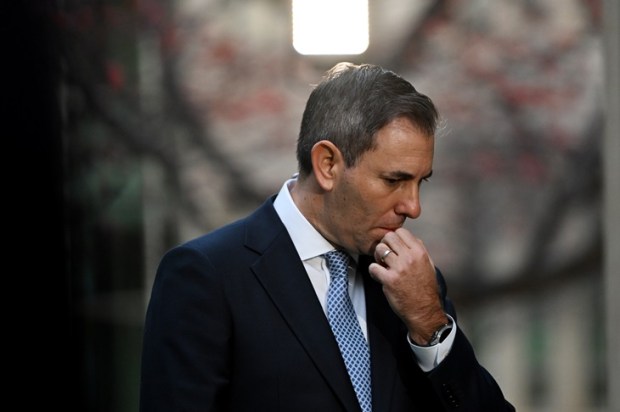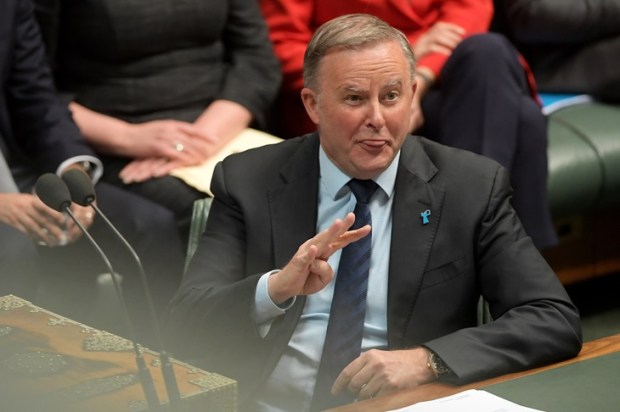Due in March this year is the report of the Review into the mandate and operational arrangements for the Reserve Bank of Australia (RBA).
The backdrop political imperative is for the Albanese government to distance it from the 3.25 percentage point increases in interest rates since May of last year, the month Labor was elected.
Around one-third of households have mortgages and they constitute a powerful potential voting block, with the political nightmare being they start blaming the Labor government for their painful mortgage repayments. Their resentment could be fuelled by perceptions the government is obsessed with the Voice and climate mania, instead of cost-of-living pressures.
The distancing task has so far constituted a parrot-like reminder at every opportunity that the RBA is an ‘independent’ agency with full autonomy over interest rate settings. Plus the war in Ukraine is to blame and Morrison spent too much during the pandemic…
Efforts ratcheted up somewhat recently when Labor backbenchers started reminding journalists that the RBA Governor’s term is up in September this year.
Shadow Financial Services Minister, Stephen Jones, upped it further by directly criticising the February rate decision.
A less obvious but cleverer strategy floated publicly, is to compel the RBA Governor to give press conferences after every meeting of the RBA Board.
Imposing that obligation on a notionally independent RBA Board is hardball politics, but one with a clear political purpose.
At least once a month, the face of a bureaucrat would appear on TV screens to justify high-interest rates and painful mortgage repayments.
Up until the recent inflation outbreak, politicians were happy to be associated with mortgage interest rates. Since the late 1980s, these rates have trended downward from a high of 17 per cent to the pandemic low of 2 per cent. Now they are nearly 6 per cent.
Labor governments are particularly vulnerable to high-interest rates as their historical record is terrible. Through the Hawke/Keating years, the standard variable mortgage rate averaged 14.1 per cent, the highest recorded of any single government.
The average mortgage rate under the Labor governments of Whitlam, Hawke, Keating, Rudd, Gillard, and Albanese is 10.6 per cent.
In contrast, the average rate since 1959 recorded by Coalition governments is 6.8 per cent, nearly a four percentage point gap.
The Coalition numbers benefit from having dominated office since the slaying of high inflation in the 1990 recession, and the subsequent introduction of inflation targeting in 1996 which was formalised in an exchange of letters between Treasurer Peter Costello and RBA Governor, Ian Macfarlane.
But even comparing interest rates post-inflation targeting, Labor still records a higher average, 7.2 per cent, versus the Coalition’s 6.3 per cent.
It is unsurprising that Labor politicians want to deal with this Achilles heel in a substantive way, well before the next election.
The catchphrase to do this is more RBA ‘transparency’, which is code for making sure the public is fully aware that high rates are the work of the RBA, and not Anthony Albanese and Jim Chalmers.
Transparency and disclosure is a ‘go-to’ favourite recommendation of independent public policy reviews, as they are consistent with the principle of well-informed buyers and sellers, improving market efficiency. They are also cheap, meaning government doesn’t need to find money to accept them.
So with the report into the RBA likely to recommend more transparency, Labor’s political need to distance itself from high rates will dovetail nicely with the likely recommendations.
But would Labor really benefit from a more transparent RBA?
Labor’s key policy weaknesses relate to both its association with the union movement and its disposition to spend more money on social policy areas.
Wages growth above 4 per cent, industrial strikes, and budget deficits are factors that push inflation and interest rates higher. A more transparent central bank may make these linkages starker, helping to educate voters on where blame should be attributed.
These linkages are kept deliberately obscure in much of the RBA’s set piece publications, as there is an unwritten rule that government doesn’t comment on interest rates, while the RBA doesn’t criticise budget policies, tax, and spending.
We saw this bargain at work in the last week of the May election campaign. The Labor Leader responded to a journalist’s question by declaring all workers should get a real wage increase, even though the inflation rate at that time was 5.1 per cent.
Putting aside the practical difficulties of engineering this, if such a policy had been implemented, then our inflation rate today would be in double figures.
Asked recently what the RBA thought about the Albanese government’s productivity-sapping pattern bargaining legislation, the RBA spokesperson made a general point in favour of flexibility, but didn’t answer the question directly.
Anyone listening to the response would not know whether the RBA was in favour of pattern bargaining, or against it.
As it stands, there is sketchy understanding in the wider community about the linkages of wages, government spending, and industrial relations with inflation and interest rates.
RBA press conferences would represent a double-edged sword for Labor. It might help put a bureaucratic face on higher interest rates, but the regular questioning by journalists about Labor’s industrial relations, wages, and spending proposals would help educate voters on the drivers of inflation and how Labor was making things worse for mortgage borrowers.
Attempts to limit RBA press conference from discussing government policies would render them misleading and inadequate. If press conferences are to be of any use, then in scope should be all the issues relevant to interest rate decisions. Including relevant government policies.
More transparency would certainly be a good thing from a public policy perspective, but I suspect not in the political interests of the Labor Party and the wider union movement.
Nick Hossack is a public policy consultant. He is former policy director at the Australian Bankers’ Association and former adviser to Prime Minister John Howard.

























